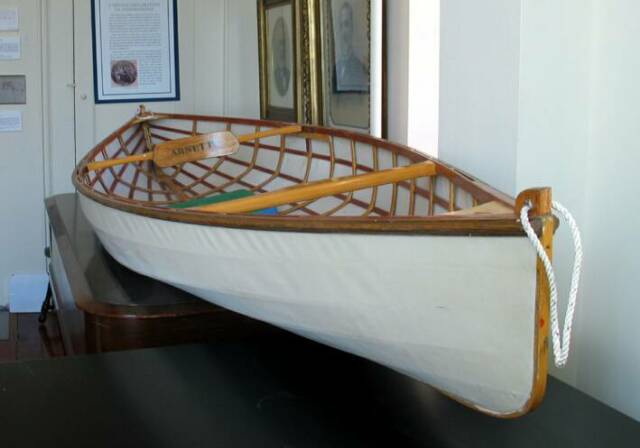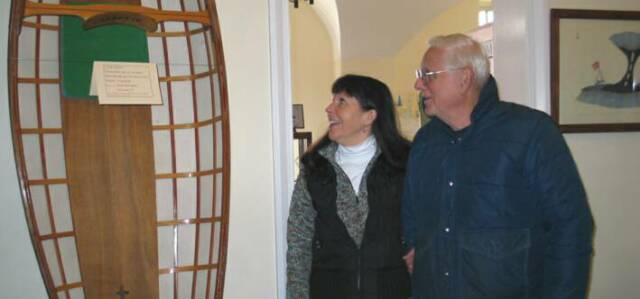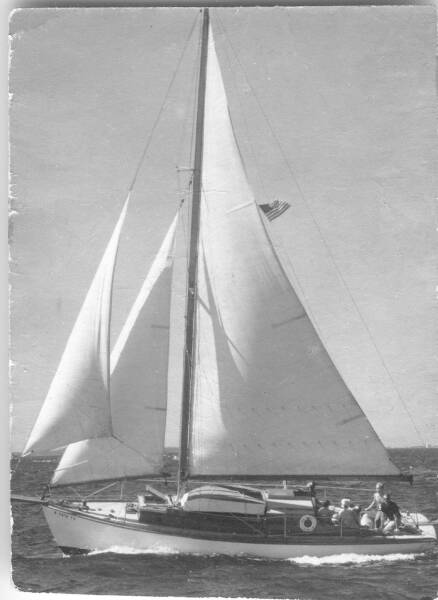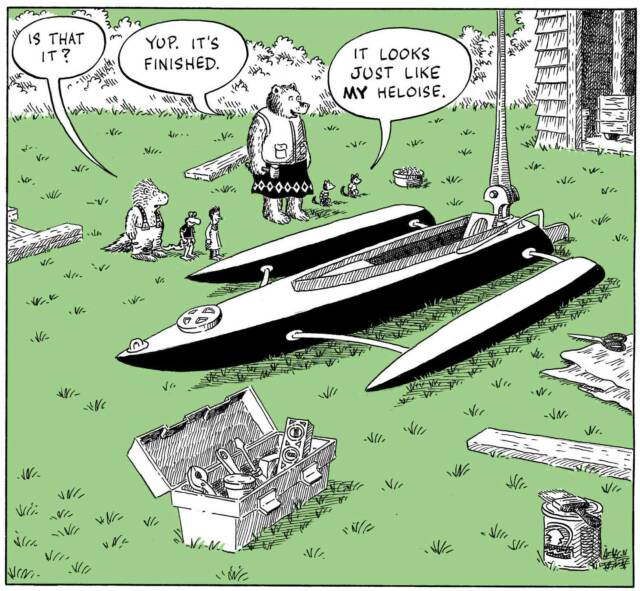There are at present two small boats on display at the museum. The following explains why one is called a double-paddle canoe and the other is called a kayak.
Most Americans associate “canoe” with birch-bark covered, undecked double-ended craft built by Native Americans. These boats are an elegant design. Built of readily available material, light weight for easy portage, shallow draft to navigate shallow rivers and rapids, they were built to any size, from single person boats to large freight carriers.
Although canvas covered wood kayaks are still being built, canoe design has evolved. Birch bark gave way to canvas covered wood, then aluminum, and today to light, durable, reinforced plastic. The ribs have disappeared, and the shape of the hulls has been highly modified. But there is a clear design-path back to the Native American canoe. As in the originals, canoes today are propelled by one or more paddlers using single blade paddles with steerage controlled by a twist at the end of the stroke by the aft paddler.
But the name “canoe” has also been used in a much looser sense for many other craft. Early explorers used the term for burnt out and dug-out log boats, and for the large, highly decorated war canoes of the Pacific Islands and northwest American Indians.
There is still another class of boats called canoes. In the 1870s a new breed of canoes were being built in the US and England. These were small, partially decked over double ended wooden boats, following the narrow lines of the Eskimo Kayak. They were built for one or two paddlers using double bladed paddles. These canoes were sophisticated in design and construction, where strength and light weight were necessary – especially those that were used for racing. More adventurous sailors decked over their entire craft and fitted them with rudders and centerboards, large sails, and an athwart ship sliding seat that extended beyond the hull, allowing the sailor to keep the boat afloat by shifting his weight from side to side. These racing sailing canoes competed internationally and had strict rules that fixed the beam, mast height, sail area, and minimum weight. Sailing canoes are still competing today.
One such boat (Foam), a 17 foot 1 inch racing canoe in the Mystic Seaport Museum collection, was built by Seth Perrson, the father of Jon Perrson who designed the little boat now on display in the Custom House Museum.
In a rare feat of seamanship Uffa Fox, a renowned English boat builder and sailor, sailed across the English Channel to France in a sailing canoe in winds of up to 30 knots.
In short, a canoe can be anything from a dugout to a large war canoe. It may be propelled by single or double paddles, by one or more paddlers, or by sail. It may have no sail or as many as three. It may have a full deck, a partial deck, or be entirely undecked. It may be smooth bottomed or have a rudder or centerboard. Because the wooden boat on display in the Museum is a direct descendent from the paddle canoes of the 1900s it may justifiably be called a canoe.
By contrast, the Eskimo word “kayak” has a relatively restricted use. Like the Native American birch-bark canoe, it is an elegantly purpose-built boat using materials at hand. The driftwood frame is tied with sinew, and the hull and deck are covered with tightly-sewn seal skin. A kayak can have one or two cockpits, each with raised rim to tie the paddler’s skirt around, making the hull water-tight in case of a roll-over. The light weight made the kayak easy to portage, and the tough flexible skin and the flexible frame protected the hull against ice damage. These boats were made to handle open water, and until recently were being used to hunt walrus and whale off northern Alaska.
Like the canoe the kayak has undergone evolution into many modern plastic forms. Some are relatively wide, stable, single or double person boats, and some are long and narrow with drop rudders to help them track through the water.
Although undecked, I’ve called the little fabric boat a kayak because it shares most of its characteristics with kayaks. The boat is very light, it is fabric covered, it has a kayak hull shape, and the paddler with a double paddle sits on the sole of the boat. If you prefer, you may call it a canoe, but then you could call almost any narrow hull a canoe.
--David McCulloch
For those interested in more information about wooden double paddling and racing sailing canoes I suggest the following:
1. Fifty Plates from W. P. Stephens, Canoe and Boat Building in the Mystic Seaport Museum library
Fifty Plates from W. P. Stephens, Canoe and Boat Building in the Mystic Seaport Museum library
2. The Best of Uffa, 1998, International Marine, Camden Maine 159 pages
The Best of Uffa, 1998, International Marine, Camden Maine 159 pages





